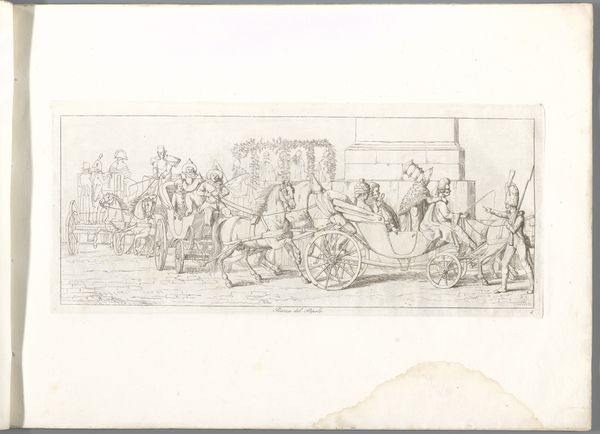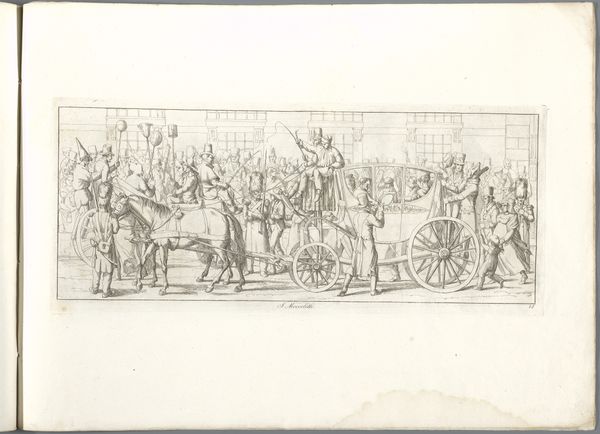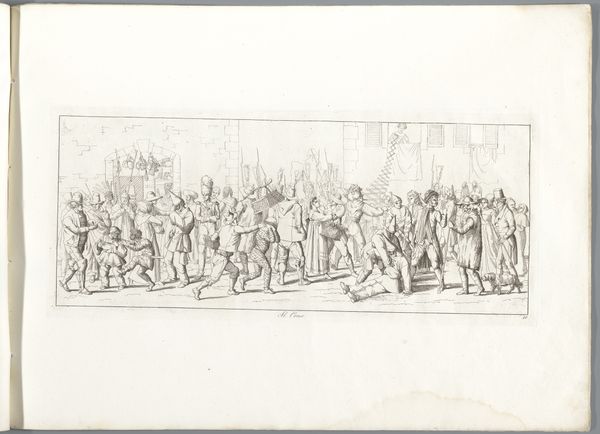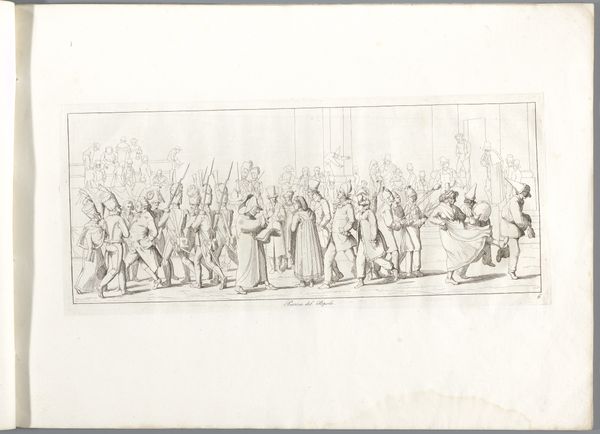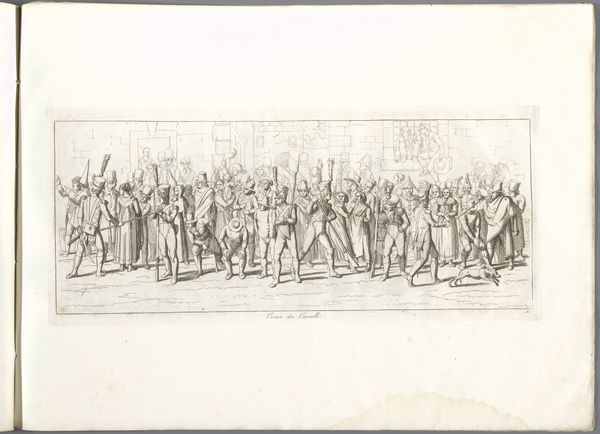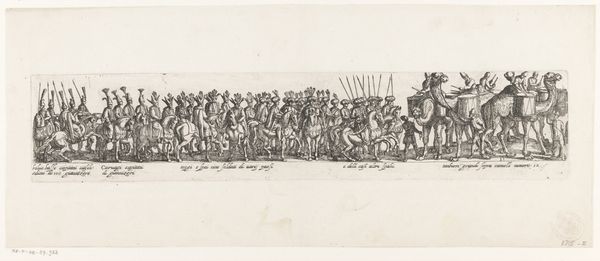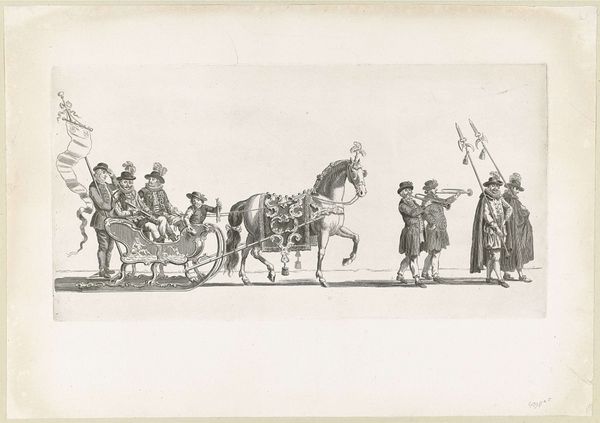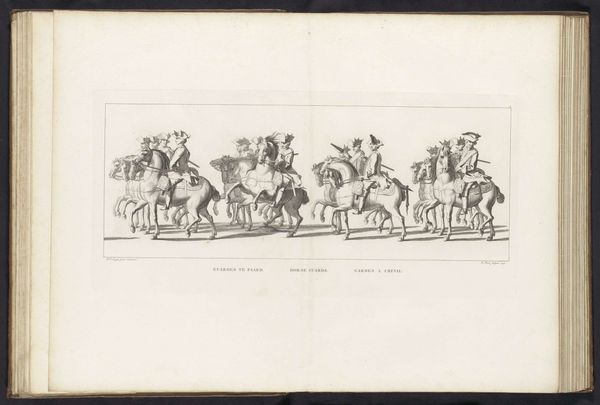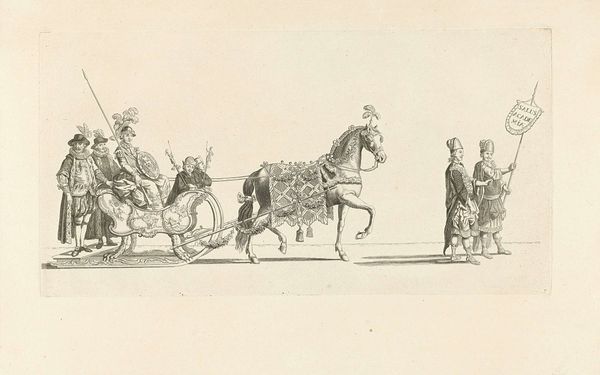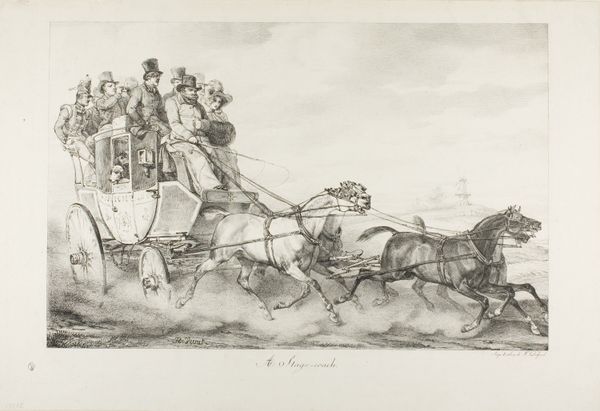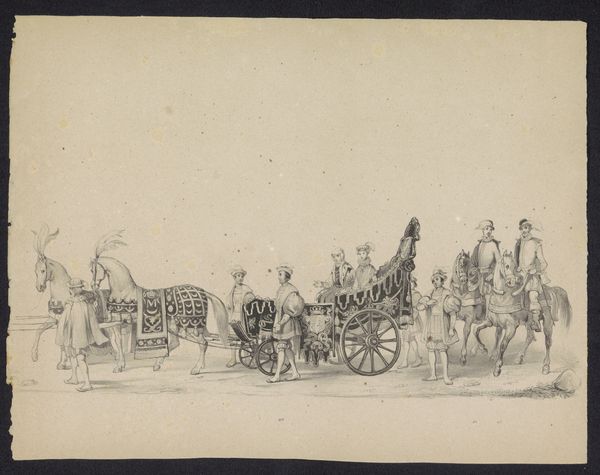
drawing, print, ink, pen, engraving
#
portrait
#
drawing
#
ink drawing
#
narrative-art
# print
#
pen illustration
#
pen sketch
#
figuration
#
ink
#
romanticism
#
pen
#
cityscape
#
history-painting
#
engraving
Dimensions: height 205 mm, width 475 mm, height 413 mm, width 568 mm
Copyright: Rijks Museum: Open Domain
Curator: Let’s explore this captivating print entitled “Kaarsenspel,” created around 1820 by Carl Gustaf Hjalmar Mörner. Editor: My first impression is that it feels incredibly detailed yet somewhat frantic. The sheer number of figures packed into the scene, the lines feel so charged! What exactly is happening here? Curator: Mörner was a fascinating figure involved in various political movements. The scene seems to depict a specific historical moment, possibly a royal procession or some kind of public ceremony. It presents a kind of "history painting" in the graphic arts of the early 19th century. Editor: Right, the detail really contributes to this sense of being a record. And those military figures, the horses pulling the carriage, everyone seems stiff, like they are acting on duty. Where does Mörner situate this work historically? Curator: Well, Mörner was a part of that period of political and social change, heavily impacted by Romanticism. Given the era, the procession could relate to monarchical events related to Napoleon’s empire after its fall, or Swedish attempts at imperialism. Editor: This puts it in an interesting position—depicting the established power structures through this fine print medium, which at the time could be circulated broadly. The style itself, the linear precision, is almost a form of social commentary, holding those in power accountable through visibility. It seems like an accessible form of protest, in some way. Curator: The pen and ink medium gives a certain edge to the composition. It allowed artists to communicate to wide audiences beyond those who moved through traditional institutional structures. Editor: Considering it's a print, meant to be reproduced, the choice of subject becomes even more compelling. Whose story is being told here, and for what purpose? Perhaps a reminder of the power dynamic or a quiet call to consider its implications? Curator: Exactly! This piece encourages viewers to examine the societal forces shaping history. Editor: Ultimately, its tight lines invite viewers into this critical examination of power, public spectacle, and collective identity of the era.
Comments
No comments
Be the first to comment and join the conversation on the ultimate creative platform.
